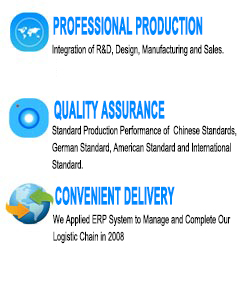The words "workplace culture" often bring to mind companies like Google or Pixar, with bright colors, open offices, company social activities, and an atmosphere of fun as well as hard work. The reality, however, is that a strong workplace culture does not have to be fun-loving to be satisfying – and if the culture is not already satisfying for your employees, then a foosball table is not going to help.
Prem Kumar, senior director of product for employee engagement solutions provider TINYPulse, defined workplace culture as the "ethos of the organization. It's what motivates, inspires and drives your organization. It's a sum of each employee's values, knowledge and interactions with one another.
" S. Chris Edmonds, author of "The Culture Engine" and founder of The Purposeful Culture Group, narrows it further: "Culture is how the organization is operating: how people treat each other, what methods are in place [for interaction]." To Edmonds, successful culture, whether your company prefers T-shirts or ties, boils down to trust, respect and dignity.
"Perks are cool, and if we look at Silicon Valley in its heyday, we may think we need things like scooters and world-class chefs, but if people are stabbing each other in the back, it's not a good culture," he said. "It's about leaders treating each employee as a legitimate person and an asset, an attractive player who can be the face of the company."
Kumar added that this attitude is apparent in how a company can embrace diversity: "At its best, workplace culture is not only derived from a diverse employee base but drives them to be better as a collective whole."
The role of the leader
Leaders, especially senior leaders, have not been asked to examine the culture aspect of the company, but it's becoming more important than ever. Edmonds said that the inherent impatience of millennials drives the need. The new generations are not content to put in 25 years with a company to get a gold watch. Rather, "they want a place where they are valued, mentored and allowed to work where they do their best. It comes down to trust, respect and dignity," he said.
The first step for any leader looking to improve the workplace culture is to determine the values that reflect the company.
"All of the companies we've found to be truly successful are led by people who embrace that which makes them different and use it as a competitive advantage," Kumar said.
Once you have determined the core values that define your organization, you need to determine what concrete behaviors reflect those values. These too vary by organization. For example, a retailer with the value of "doing more for the customer" might have employees offer to help carry bags to the customer's car, while a mechanic shop with the same value might have free detailing with every repair.
Internally, of course, you can't go wrong with the core values of treating everyone with respect, trust and dignity. However, one company might give management the freedom to give time off for excellent behavior; others might have a group social to celebrate an occasion.
One key behavior TINYPulse studies have found that's central to all successful workplace cultures is transparency. "Transparency at its heart is paying people the respect of bringing them along on your journey – whether it's explaining why a decision was made with honest detail or holding yourself and others accountable. This is key to a great culture," Kumar said.
Leading by example
Printing your company's values on T-shirts and posters is not enough. It's up to the leaders to model them, from the CEO to the direct manager. When management models the defined values and behaviors, employees start to follow suit. Again, the clearly defined behaviors are key, as they make it easy for managers to point out when someone is not following the company values (and give workers the ability to do the same for management).
"Culture is not something you can delegate to HR. You need to [model the behaviors] yourself because managers are looking to you," said Edmonds.
Edmonds noted that an improved culture leads to improved productivity – and that often leads to promotions.
"We regularly see performance go up 30 to 35 percent, and service up 40 percent or more as a result of improving the culture," he said. "The problem is that if the leader who championed the culture moves up, the new leader may change the culture and undo all the good."
Therefore, senior leadership must stay dedicated to the new culture, said Edmonds. "The behaviors have to become ingrained so that it survives the change of leadership and the organization can evolve with its mission."

 苏公网安备32050502001004号
苏公网安备32050502001004号 
